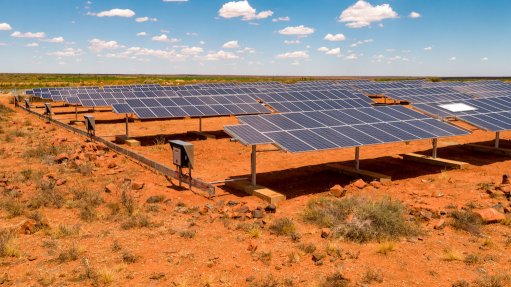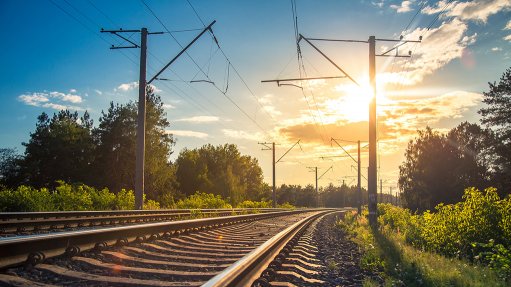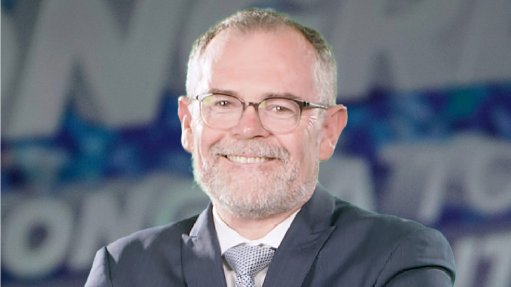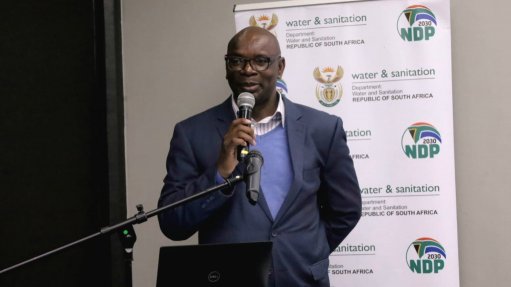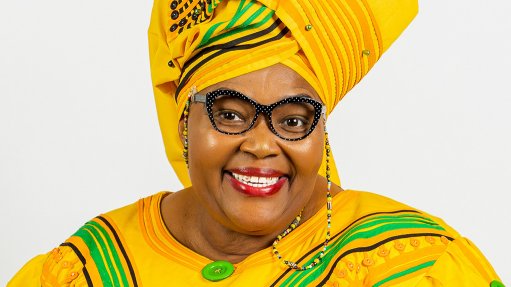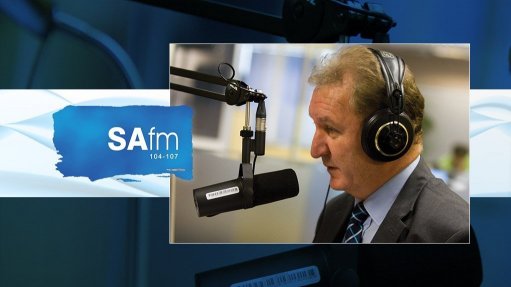One year on, power-saving campaign moves to raise its profile and impact
It has been a year since Deputy President Kgalema Motlanthe launched the 49M energy-saving campaign in Johannesburg and State-owned Eskom is optimistic that South Africans are starting to heed the call to save energy – and the power utility is aiming to ensure that the initiative makes a bigger impact.
As the campaign initiator and funder, Eskom is working in partnership with business and government to get the message to 49-million South Africans to help alleviate pressure on the electricity grid by saving energy on a daily basis.
“To date, some of the campaign highlights include the visible support from Motlanthe and Public Enterprises Minister Malusi Gigaba, who have dedicated time to talk to citizens about the importance of saving electricity,” says Eskom.
“The new coal-fired power stations, Medupi and Kusile, that are going to bring relief are still under construction and, while this is happening, the demand for electricity is increasing. We need to save about 3 000 MW of electricity. To do that, we need to start implementing various measures that are going to address both the demand and the supply of electricity,” says Gigaba.
Further, the campaign has garnered much-needed support from partners, such as car manufacturer Toyota and banking giants Standard Bank and Nedbank, besides others. These organisations run internal awareness campaigns with their staff, using 49M energy efficiency exhibitions.
Cellular phone provider MTN visibly supports the campaign through its callback facility tag line: “Save electricity by simply flicking off a switch – you have the power to make a difference, 49M, remember your power,” says Eskom.
Environment conservation organisation the Wildlife and Environment Society of South Africa (Wessa) also endorses the 49M campaign because it resonates with its mission to promote public participation in caring for the earth.
“We believe it is everyone’s responsibility to use resources in a sustainable and respons-ible way. Electricity is a significant resource and, currently, its production in South Africa is heavily reliant on fossil fuels, which is not environmentally viable in the long run,” says Wessa energy programme manager Avril Wilkinson.
Wessa says its involvement in the campaign is at an endorsement level and in response to the call, through its current programmes, to save energy. “These include strengthening our programmes aimed at reducing our footprint internally by trying various tech- nologies. The 49M campaign also resonates with our Stepping Up to Sustainability programme, where we are learning and sharing more about sustainability tech- nologies,” she says.
Wessa reports that the 49M initiative is on a par with the Wessa-Eskom Energy and Sustainability programme, which has con-sistently initiated energy efficiency projects with learners and communities for the past 15 years.
“It must be clarified that the nature of the 49M energy-saving campaign is about behavioural change. This is, therefore, not easy to detect and measure immediately but requires time and sufficient monitoring,” says Eskom.
The utility acknowledges that there may not be noticeable change right now but it will continue to encourage South Africans to save at least 10% on their current electricity consumption.
“The campaign has been steadily gaining momentum since its launch in March last year and, to date, about 35 business organisations have come on board to support the campaign and have committed themselves to playing a role to conserve energy. The commitment shown by the business community has further strengthened the voice of the campaign,” says Eskom.
Climate change and greening nonprofit organisation Food & Trees for Africa (FTFA) founder Jeunesse Park says energy issues significantly impact on climate change – hence, their support of the 49M initiative, which promotes energy efficiency and leads to less carbon dioxide emissions.
Eskom has, over the past years, strengthened its efforts to reduce overdemand by adding new-generation capacity and funding other energy efficiency initiatives. To date, it has replaced over 47-million incandescent light bulbs with compact fluorescent bulbs (CFLs) in residential dwellings nationwide. The CFLs save energy and last longer, compared with the old bulbs, and they have contributed 1 958 MW of demand savings to date.
Highlights
The launch of the 49M campaign last year was followed by an extensive advertising and public relations campaign, which resulted in about R1,6-million of free publicity.
“We have also conducted mall activations in conjunction with local radio stations in all nine provinces and we have reached more than 40 000 South African citizens through one-on-one conversations. We have visited industry and trade shows throughout the country and, through the above-the-line campaign, we managed to reach over seven-million people over the past year,” says Eskom.
Further, the utility reports that a partnership conference was held in association with the Gordon Institute of Business Science last year, where all 49M campaign partners participated in determining the future of the campaign and assisted in setting direction. “At the conference, all our partners present reaffirmed their commitment to the campaign,” says Eskom.
In January, Gigaba, who is championing the campaign together with Eskom executives, launched a national door-to-door campaign to encourage South Africans to lead energy efficient lifestyles.
“The door-to-door campaign and the launch of the national roadshow began in Kwa-Guqa, in Emalahleni, in January, and in Gugulethu, in Cape Town, in February, and have been received with enthusiasm by local residents and community leaders. This is positive affirmation that South African citizens are taking the issue of energy conservation seriously,” says Eskom.
The national roadshow and door-to-door campaigns are expected to be rolled out to the rest of the country in the current financial year and a budget of R6-million has been set aside to reach all provinces in 2012.
“The launch of the 49M 2012 national road-show campaign is a response to ensure we intensify the energy efficiency campaign. While we know that the current electricity system is tight, all of us need to be cognisant of our power to save electricity,” says Gigaba.
The aim of the roadshow is to encourage all South Africans to lead energy smart lifestyles, to be energy efficient and ensure a sustainable future for South Africa. Members of the public will, through the marketing campaign, be sensitised to use electricity sparingly, encouraged to change their behaviour and, ultimately, every citizen will become an ambassador for the campaign.
Additional Energy-Saving Initiatives
The utility reports that other activities planned for the year to support the 49M campaign include energy efficiency exhibitions and breakfast briefings with industry players, where topics and solutions around energy supply will be discussed.
Further, the campaign will also actively support initiatives aimed at promoting energy efficiency, such as the Green Expo, the Africa Energy Indaba and other energy-related exhibitions.
Successful industrial and mining projects have achieved about 527 MW or 1 400 GWh in savings since 2003 and, to set an example of what can be done, Eskom’s energy efficiency projects in its buildings brought about a reduction in energy consumption of 24.2 GWh last year, with a target in 2012 of 25.5 GWh. This project also involves improvements in thermal efficiency at power plants and a reduction of transmission and distribution line losses, says Eskom.
A significant number of retailers, banks and other financial institutions, motor com- panies, hospitality facilities, clinics and hospitals and business property owners have partnered with Eskom to ensure a sustain- able energy efficiency drive.
Eskom has also developed energy efficiency funding and rebate programmes focused on the needs of the growing commercial sector. Greening workshops, specifically focused on the hospitality industry, have been held to increase awareness of the various energy efficiency rebates available.
“Our communication support entails packaging energy efficiency material in a user-friendly manner to ensure that com- munication teams from our partner com- panies run their own internal energy efficiency campaigns independently,” says Eskom.
As part of its marketing and communications programme, the utility has implemented the national and regional power alert system. Power alert is an interactive media control system aimed at the residential market, empowering the public to assist in reducing electricity use on weekdays between 17:30 and 21:00.
“We have signed power purchase agreements (PPAs) with two municipalities to secure baseload generation on the supply and demand side. We have also secured available non-Eskom generation from the customer base on a short-term basis and signed power buy-back agreements, where we were able to remove base demand off the system. Some agreements were deferred to the winter period,” says Eskom.
Eskom has obtained voluntary cooperation over peak periods from large customers, total- ling at least 400 MW. Further, the utility has indentified possible cross-border generation and discussions are currently under way.
Solar Water Heating
Despite some of the confusion relating to solar water heaters (SWHs), government has set a target for renewable energy to contribute 10 000 GWh of final energy consumption by 2013 and SWHs could contribute up to 23% towards this target.
“Solar power is one of the most effective renewable-energy sources available. By using it for water heating, we can target one of the most power-intensive household activities for maximum power saving. Solar water heating is a well-established technology and the solar rebate programme has been running since 2008. A total of 156 000 rebate claim requests have been received to date, while 126 778 claims have been settled,” says Eskom.
Is It Sustainable?
Eskom acknowledges that, although the impact of the campaign may not be noticeable at this point, it is satisfied with the energy- saving awareness that the campaign has generated to date.
Wilkinson argues that a significant challenge lies in ensuring that the initiative does not end up being only an awareness campaign but instead meaningfully engages people to encourage change in how people plan and execute energy use nationally.
Gigaba affirms that 49M is more than just a campaign; it is a broader movement which seeks to change the manner in which all South Africans use electricity. “The launch of the roadshow marks the process of engaging with South Africans on using electricity sparingly and prudently.”
Park says FTFA encourages all South Africans to be more aware of their daily energy consumption and environmental impact to ensure the success of 49M. “People must understand this is a long-term aim and, for it to work, a commitment needs to be made to make the earth a healthier and sustainable planet to live on.”
Outlook
South Africa’s power system will be tight for the next few years, with the next two years being critical. “We have kept the lights on since 2008 but balancing supply and demand has been a challenge. This is because most power stations are in their midlife and require increased maintenance; however, maintenance has constantly been shifted to ensure we can meet demand,” says Eskom.
The strategy of shifting maintenance outages can no longer be sustained. “In 2011, we used our open-cycle gas turbines more to ensure that, as much as possible, maintenance was done while keeping the lights on.”
However, there is still a maintenance backlog and, ideally, 3 000 MW of committed capacity from supply and demand initiatives is needed immediately to keep the lights on and enable maintenance to continue. Re-ducing this target will require an adjustment to the maintenance programme. The system is at risk but, if the incidents materialise, the aim is to contain the impact to short periods,” says Eskom.
Eskom has set up a recovery team to execute the plan to secure identified and approved demand and supply levers, step up communications to encourage greater energy efficiency, be clear about its maintenance philosophy and the governance processes to manage risk, and specify operating envelopes for power generation plants.
Further, the team will implement an effective outage strategy, using maintenance windows to reduce the backlog; deal with emerging risks and conduct scheduled, design-based mainte-nance; and implement a more sustainable maintenance philosophy throughout the generation fleet.
The Department of Public Enterprises and Eskom will establish a task team to develop a detailed delivery schedule and review progress, coordinate activities that require government intervention, prepare updates for Cabinet, and align communication and stakeholder plans.
“We need a partnership approach and need the support of all our citizens and customers. We need all the independent power producers to generate either for themselves or through PPAs. Eskom is supporting this process and will continue to do so in future,” the utility states.
Gigaba concluded that it was the small actions that contributed to tackling the overall energy shortage.
Comments
Press Office
Announcements
What's On
Subscribe to improve your user experience...
Option 1 (equivalent of R125 a month):
Receive a weekly copy of Creamer Media's Engineering News & Mining Weekly magazine
(print copy for those in South Africa and e-magazine for those outside of South Africa)
Receive daily email newsletters
Access to full search results
Access archive of magazine back copies
Access to Projects in Progress
Access to ONE Research Report of your choice in PDF format
Option 2 (equivalent of R375 a month):
All benefits from Option 1
PLUS
Access to Creamer Media's Research Channel Africa for ALL Research Reports, in PDF format, on various industrial and mining sectors
including Electricity; Water; Energy Transition; Hydrogen; Roads, Rail and Ports; Coal; Gold; Platinum; Battery Metals; etc.
Already a subscriber?
Forgotten your password?
Receive weekly copy of Creamer Media's Engineering News & Mining Weekly magazine (print copy for those in South Africa and e-magazine for those outside of South Africa)
➕
Recieve daily email newsletters
➕
Access to full search results
➕
Access archive of magazine back copies
➕
Access to Projects in Progress
➕
Access to ONE Research Report of your choice in PDF format
RESEARCH CHANNEL AFRICA
R4500 (equivalent of R375 a month)
SUBSCRIBEAll benefits from Option 1
➕
Access to Creamer Media's Research Channel Africa for ALL Research Reports on various industrial and mining sectors, in PDF format, including on:
Electricity
➕
Water
➕
Energy Transition
➕
Hydrogen
➕
Roads, Rail and Ports
➕
Coal
➕
Gold
➕
Platinum
➕
Battery Metals
➕
etc.
Receive all benefits from Option 1 or Option 2 delivered to numerous people at your company
➕
Multiple User names and Passwords for simultaneous log-ins
➕
Intranet integration access to all in your organisation






